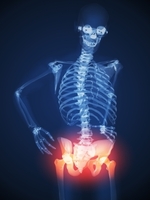*Pelvic Pain and PT
 Monday, January 31, 2011 at 03:53PM
Monday, January 31, 2011 at 03:53PM PELVIC PAIN
Pelvic pain predominately affects women, though men may suffer with pelvic and/or rectal pain as well. It can be a debilitating form of pain, causing difficulty with sitting, urinating, and intercourse. Once your doctor rules out other medical causes (such as fibroids, cysts, enlarged prostate, or infections),dysfunction of the pelvic floor muscle may be the cause. There are several conditions that fall under “pelvic pain”. Here is a slideshow of potential causes of pelvic pain (not all are appropriate for PT). See below for a list of specific medical diagnoses potentially related to pelvic floor dysfunction that may respond to physical therapy treatment.
Common Symptoms related to pelvic pain:
- Pelvic, abdominal, or low back pain
- Pain or difficulty with urination or bowel movements
- Frequent urination
- Constipation or diarrhea
- Painful intercourse
- Heavy feeling in pelvis
- Incontinence or loss of bladder control
Different Types of pelvic pain conditions possibly related to dysfunction in the pelvic floor muscles that may benefit from conservative physical therapy treatment:
- Dyspareunia: painful intercourse.
- Vaginismus: painful intercourse related to pelvic floor muscle spasm.
- Vulvodynia or Vestibulodynia / Vestibulitis : pain in the genital area or vaginal opening.
- Pelvic Floor Muscle disorder / spasm/ myalgia: Tightening of the pelvic floor muscles causing pain and dysfunction .
- Levator Ani Syndrome and proctalgia fugax : painful spasm of the pelvic floor muscle causing rectal pain.
- Pudendal Neuralgia / Alcock Canal Syndrome, and Persistent Genital Arousal Disorder (PGAD) / Persistent Sexual Arousal Syndrome (PSAS) or Restless Genital Syndrome (RGS): pelvic and genital pain and sympotms related to compression or irritation of the pudendal nerve in the pelvis.
- Chronic Prostatitis / Chronic Pelvic Pain Syndrome (CP/CPPS), Chronic nonbacterial prostitis, Prostatodynia: pelvic pain from pelvic floor muscle dysfunction in men.
- Interstitial Cystitis, Bladder pain syndrome/interstitial cystitis (BPS/IC) : a bladder disease that can cause pain, urinary urgency and frequency. It can also cause pain with activities such as intercourse or sitting.
- Overactive Bladder: Condition including symptoms of urinary urgency and frequency. Not always associated with pain but may accompany any condition that irritates the pelvic floor muscle such as interstitial cystitis.
- Cocygodynia or Tailbone pain: Pain in the coccyx or tailbone worsened by sitting that may be related to pelvic floor muscle dysfunction.
- Endometriosis: a condition in which uterine lining cells appear in the abdomen leading to pain. Mostly managed medically with medication or surgery, but physical therapy may help with pain.
Conservative Physical Therapy Management of pelvic pain due to pelvic floor dysfunction may include:
- modalities such as heat and ice
- Manual Therapy: “hands on” treatment to improve pain and restore function and movement.
- Mobilization and Manipulation: movement of a joint to improve pain and restore functional movement.
- Therapeutic exercise: specific exercise to improve pain and restore functional movement.
- Functional Movement Training: exercises to improve posture and movement
- Kegel exercises or pelvic floor retraining: exercise to correct pelvic floor muscle. dysfunction. It is important to get proper training in doing this exercise correctly to avoid problems.
- Biofeedback: a way of using a computer or other device to “see” and improve body functions such as muscle activity or indicators of stress. Also used to “see” the function of the pelvic floor muscle to improve therapeutic exercise.
- Electrical Stimulation or TENS: used to help improve pain, inflammation, muscle spasm, muscle function, and circulation.
Here is an article on treatments for pelvic pain including PT.
Not all physical therapists work with the pelvic floor. There are women's health physical therapists who specialize in pelvic floor rehabilitation. They work with conditions that may include incontinence, pelvic pain, pregnancy, and osteoporosis. You can get more information on this specialty area of physical therapy or locate a PT who works with these conditions at the website for the Section on Women's Health of the American Physical Therapy Association here.
*Links are given to provide a general overview of a topic and not intended to suggest complete or authoritative information on a particular subject. The information provided is always subject to change.*

Reader Comments